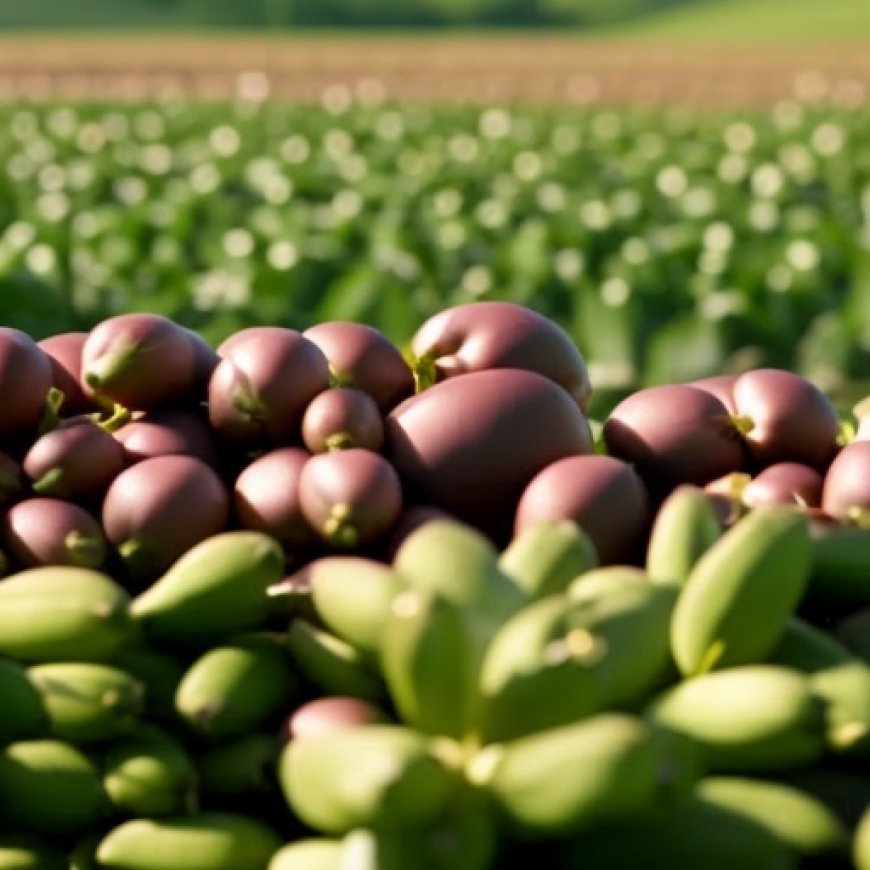Nature’s Toolbox: Unlocking the Potential of the Agricultural Biologicals Market
Nature's Toolbox: Unlocking the Potential of the Agricultural ... Digital Journal


Press Release
Published August 23, 2023
The global agricultural biologicals market is projected to reach USD 29.31 billion by 2029, growing at a CAGR of 14.07% during the forecast period. Key companies in the market include Bayer AG (Germany), BASF SE (Germany), Syngenta AG (Switzerland), UPL Limited (India), Marrone Bio Innovations (U.S.), SEIPASA S.A. (Spain), Koppert Biological Systems (Netherlands), PI Industries (India), Novozymes A/S (Denmark), Gowan Group (U.S.) and many more.
Introduction
- Research Scope
- Market Segmentation
- Research Methodology
- Definitions and Assumptions
Executive Summary
Market Dynamics
- Market Drivers
- Market Restraints
- Market Opportunities
Key Insights
- Impact of COVID-19
- Supply Chain Challenges
- Potential Opportunities due to COVID-19
- Overview on Agrochemicals Use Trend
- Crop Cultivation Pattern
- Qualitative Analysis on Advantages of Agricultural Biologicals
- Supply Chain and Regulatory Analysis
- Recent Industry Developments: Policies, Partnerships, New Product Launches, and Mergers and Acquisitions
- Qualitative Analysis (in relation to COVID-19)
Global Agricultural Biologicals Market Analysis, Insights and Forecast, 2018-2029
- By Type (Value)
- Biopesticides
- Biostimulants
- Biofertilizers
- By Source (Value)
- Microbial
- Biochemicals
- By Application Method (Value)
- Foliar Application
- Soil Treatment
- Seed Treatment
- Others
- By Crop (Value)
- Row Crops
- Fruits and Vegetables
- Others
- By Region (Value)
- North America
- Europe
- Asia Pacific
- South America
- Middle East and Africa
Key Findings / Summary
Market Size Estimates and Forecast
Regional Insights:
Competitive Landscape:
Key Industry Development:
About Us:
Address:
Phone:
Email:
Follow Us:
SDGs, Targets, and Indicators Analysis
1. Which SDGs are addressed or connected to the issues highlighted in the article?
- SDG 2: Zero Hunger – The article discusses the agricultural biologicals market, which is related to improving agricultural productivity and ensuring food security.
- SDG 12: Responsible Consumption and Production – The use of agricultural biologicals as safer alternatives to traditional chemical inputs aligns with the goal of promoting sustainable consumption and production practices.
- SDG 15: Life on Land – The article mentions that agricultural biologicals can improve soil health and biodiversity, contributing to the conservation and sustainable use of terrestrial ecosystems.
2. What specific targets under those SDGs can be identified based on the article’s content?
- SDG 2.4: By 2030, ensure sustainable food production systems and implement resilient agricultural practices that increase productivity and production, that help maintain ecosystems, that strengthen capacity for adaptation to climate change, extreme weather, drought, flooding, and other disasters, and that progressively improve land and soil quality.
- SDG 12.4: By 2020, achieve the environmentally sound management of chemicals and all wastes throughout their life cycle, in accordance with agreed international frameworks, and significantly reduce their release to air, water, and soil in order to minimize their adverse impacts on human health and the environment.
- SDG 15.5: Take urgent and significant action to reduce the degradation of natural habitats, halt the loss of biodiversity, and protect and prevent the extinction of threatened species.
3. Are there any indicators mentioned or implied in the article that can be used to measure progress towards the identified targets?
- Indicator for SDG 2.4: Adoption of sustainable agricultural practices, such as the use of agricultural biologicals, can be measured to assess progress in implementing resilient agricultural practices and improving land and soil quality.
- Indicator for SDG 12.4: Reduction in the use and release of synthetic plant protection constituents, such as synthetic fertilizers, can be an indicator of progress in achieving environmentally sound management of chemicals in agriculture.
- Indicator for SDG 15.5: Increase in soil health and biodiversity resulting from the use of agricultural biologicals can be an indicator of progress in reducing the degradation of natural habitats and protecting biodiversity.
Table: SDGs, Targets, and Indicators
| SDGs | Targets | Indicators |
|---|---|---|
| SDG 2: Zero Hunger | 2.4: By 2030, ensure sustainable food production systems and implement resilient agricultural practices that increase productivity and production, that help maintain ecosystems, that strengthen capacity for adaptation to climate change, extreme weather, drought, flooding, and other disasters, and that progressively improve land and soil quality. | Adoption of sustainable agricultural practices, such as the use of agricultural biologicals. |
| SDG 12: Responsible Consumption and Production | 12.4: By 2020, achieve the environmentally sound management of chemicals and all wastes throughout their life cycle, in accordance with agreed international frameworks, and significantly reduce their release to air, water, and soil in order to minimize their adverse impacts on human health and the environment. | Reduction in the use and release of synthetic plant protection constituents, such as synthetic fertilizers. |
| SDG 15: Life on Land | 15.5: Take urgent and significant action to reduce the degradation of natural habitats, halt the loss of biodiversity, and protect and prevent the extinction of threatened species. | Increase in soil health and biodiversity resulting from the use of agricultural biologicals. |
Behold! This splendid article springs forth from the wellspring of knowledge, shaped by a wondrous proprietary AI technology that delved into a vast ocean of data, illuminating the path towards the Sustainable Development Goals. Remember that all rights are reserved by SDG Investors LLC, empowering us to champion progress together.
Source: digitaljournal.com

Join us, as fellow seekers of change, on a transformative journey at https://sdgtalks.ai/welcome, where you can become a member and actively contribute to shaping a brighter future.







